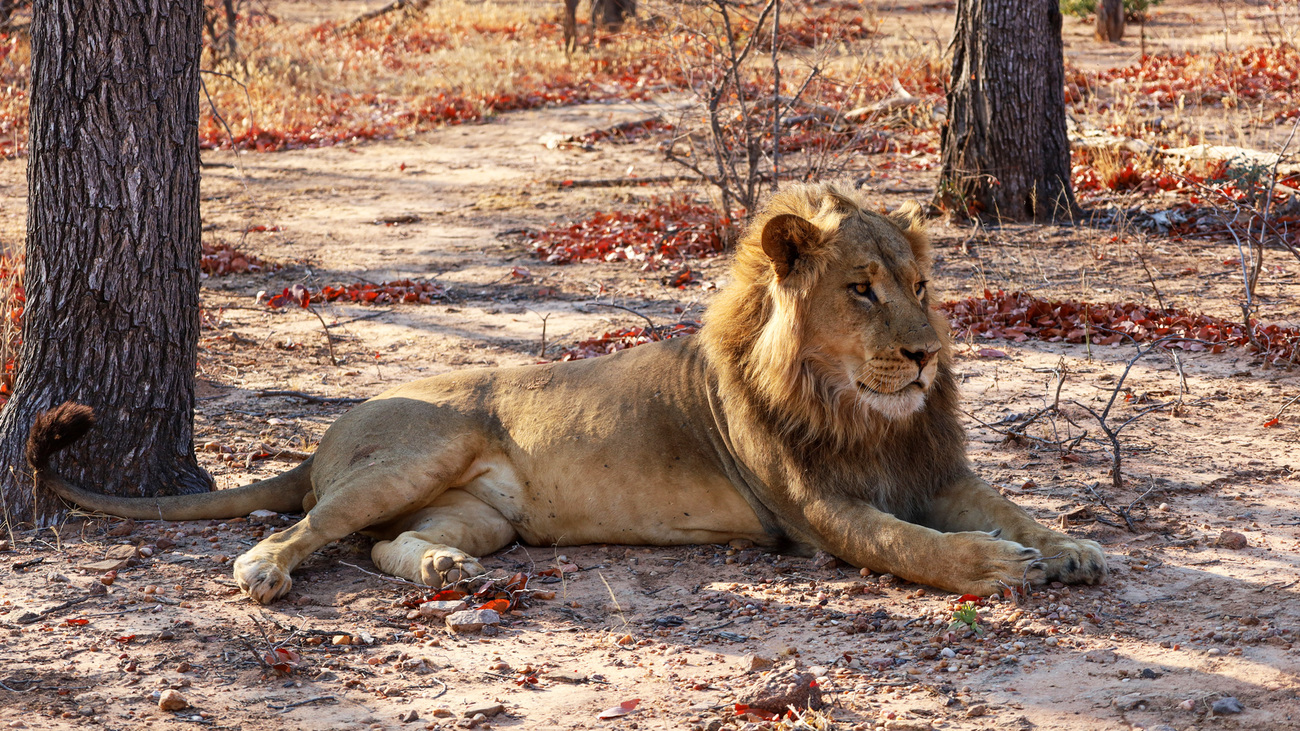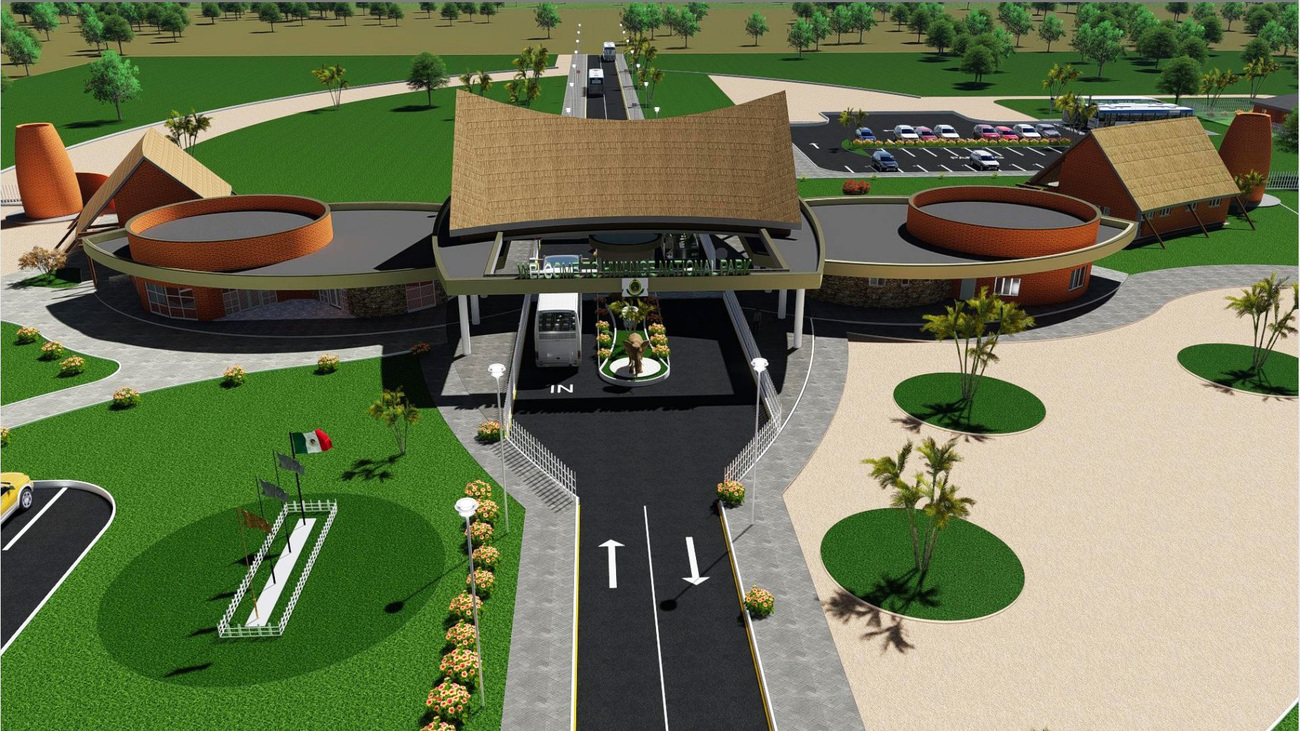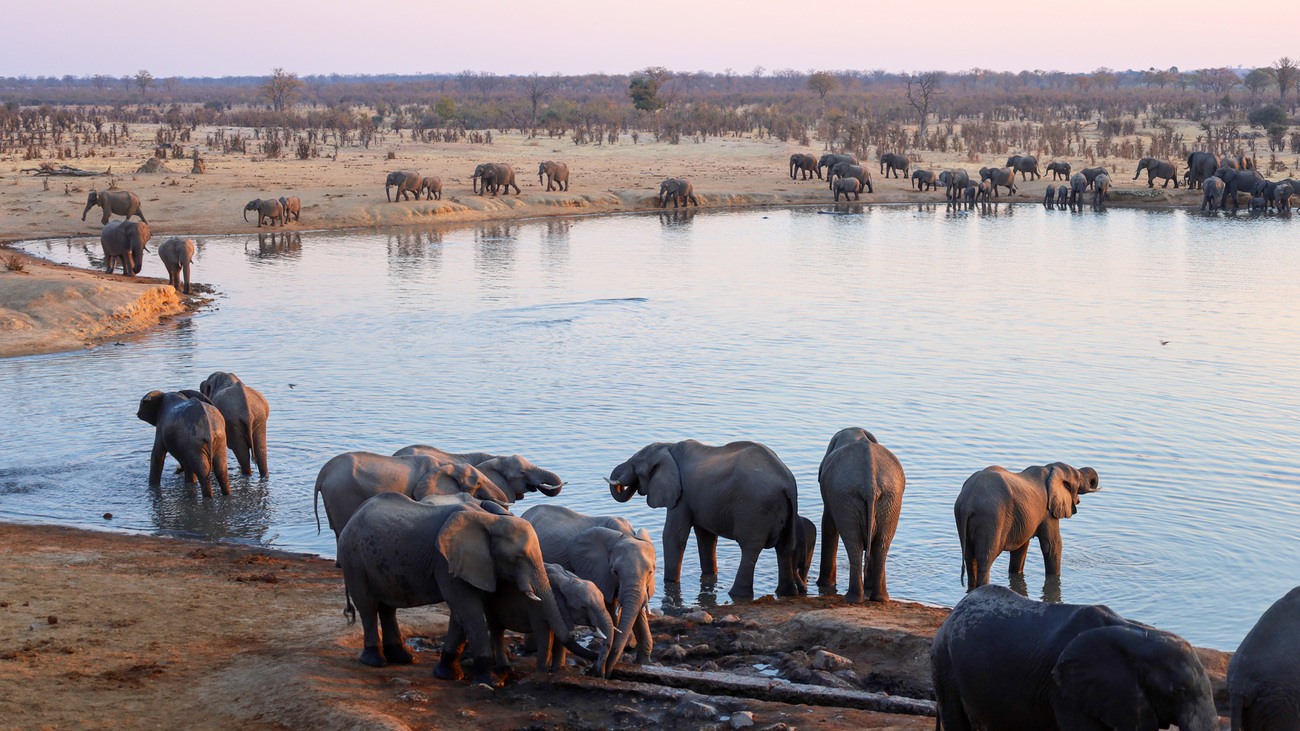Press releases
Global youth invited to illustrate the hidden world of plants and wildlife in the 2026 World Wildlife Day art contest
Read moreNew building at Hwange National Park aims to support tourism and conservation in Zimbabwe

Zimbabwe’s Hwange National Park is famed for its biodiversity and large population of elephants that share the savannah grasslands with over 100 other mammal species. It is one of Africa’s ten largest national parks—and is expected to lead a boom in Zimbabwe’s tourism.
Since signing a conservation agreement in 2019, IFAW and Zimbabwe Parks and Wildlife Management Authority (ZimParks) have concentrated on restoring the world-famous wildlife sanctuary by strengthening law enforcement, improving ranger welfare, and renovating ageing infrastructure.
The latest project to get the green light is the construction of a new multi-purpose complex at Hwange’s main entrance point.
‘The construction is multi-use and includes tourism offices, an exhibition centre, visitor and cultural centres, staff and ranger housing, and a car park—all forming part of the main entrance and exit point to Hwange,’ says Dr. Jimmiel J. Mandima, IFAW Vice President of Global Programmes and Institutional Giving.
Quality infrastructure and world-class ancillary will position Hwange as a compelling tourism destination with an exclusive, distinct visitor experience.

The new complex is the first significant investment since ZimParks and IFAW extended their partnership to a 25-year, US$50 million conservation agreement.
The investment, which has the endorsement and blessings of the Hwange traditional leaders and the Government of Zimbabwe, is part of the vision of the five countries (Zimbabwe, Zambia, Botswana, Namibia, and Angola) in the KAZA Transfrontier Conservation Area (TFCA) to transform the region into a world-class tourism destination through the provision of quality infrastructure and ancillary services.
The Honourable Mangaliso Ndlovu, Zimbabwe Minister of Environment, Climate, and Wildlife, has formally greenlighted the project at a celebration at the Hwange NP leading gate site.
‘This new complex will greatly increase the visibility of Hwange National Park, improve the visitor experience, enhance security, and help reposition the park as a competitive and must-visit destination,’ said Ndlovu.
Community engagement is a core strategy of IFAW’s work. Helping animals and people thrive together relies on local communities participating in, benefiting from, and owning the animal welfare and conservation initiatives that affect them.
The Hwange complex includes a gift shop promoting and selling locally produced crafts, while a visitor centre allows the Hwange community to showcase their culture and encourage heritage tourism. Other activities will include exhibitions and marketing at an educational museum facility, a library, and a computer room for local youth.

‘The ZimParks-IFAW partnership has brought tremendous change to the park and the surrounding community. The partnership has proven to be an effective framework for supporting biodiversity conservation and leveraging resources for conservation,’ said Dr. Fulton Mangwanya, Director-general of ZimParks.
With 45,000 elephants, over 100 species of mammals, and 400 bird species, Hwange National Park is a core part of the Kavango Zambezi Transfrontier Conservation Area (KAZA TFCA)—the world’s largest transfrontier conservation area—established to promote conservation and tourism development.
At a staggering 520,000 km² —an area almost the size of Germany and Austria combined—KAZA comprises a mosaic of land uses, with 36 formally proclaimed national parks and three UNESCO World Heritage sites, including the legendary Victoria Falls in Zimbabwe.
‘IFAW hopes our partnership with ZimParks contributes to the aspirations for tourism in the KAZA-TFCA and its role in helping deliver sustainable economic development,’ Dr Mandima said.
Our work can’t get done without you. Please give what you can to help animals thrive.
Unfortunately, the browser you use is outdated and does not allow you to display the site correctly. Please install any of the modern browsers, for example:
Google Chrome Firefox Safari